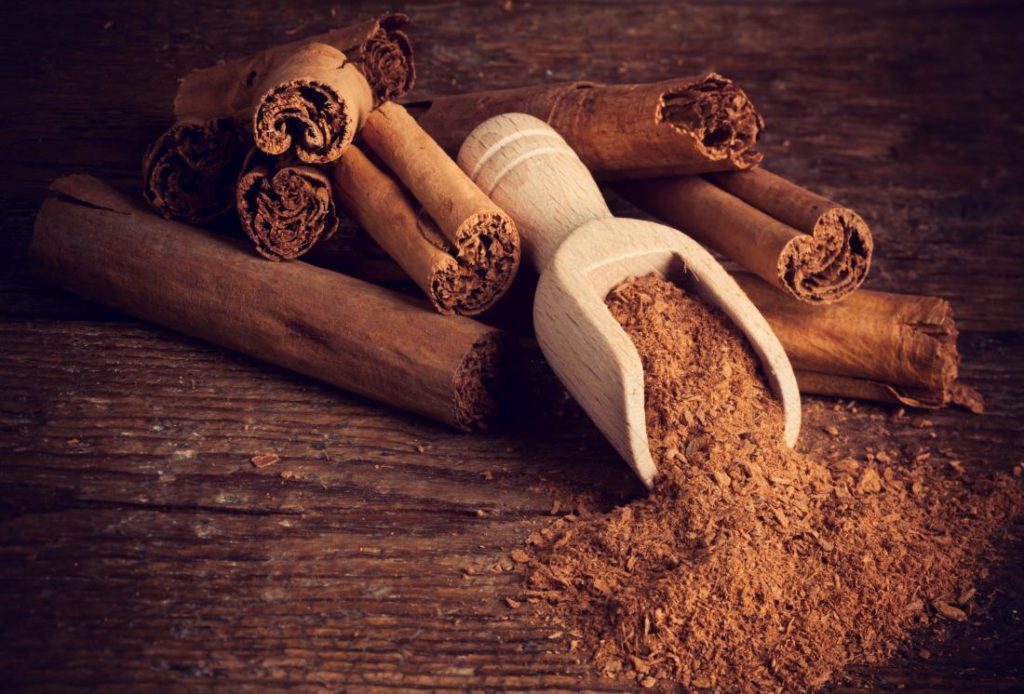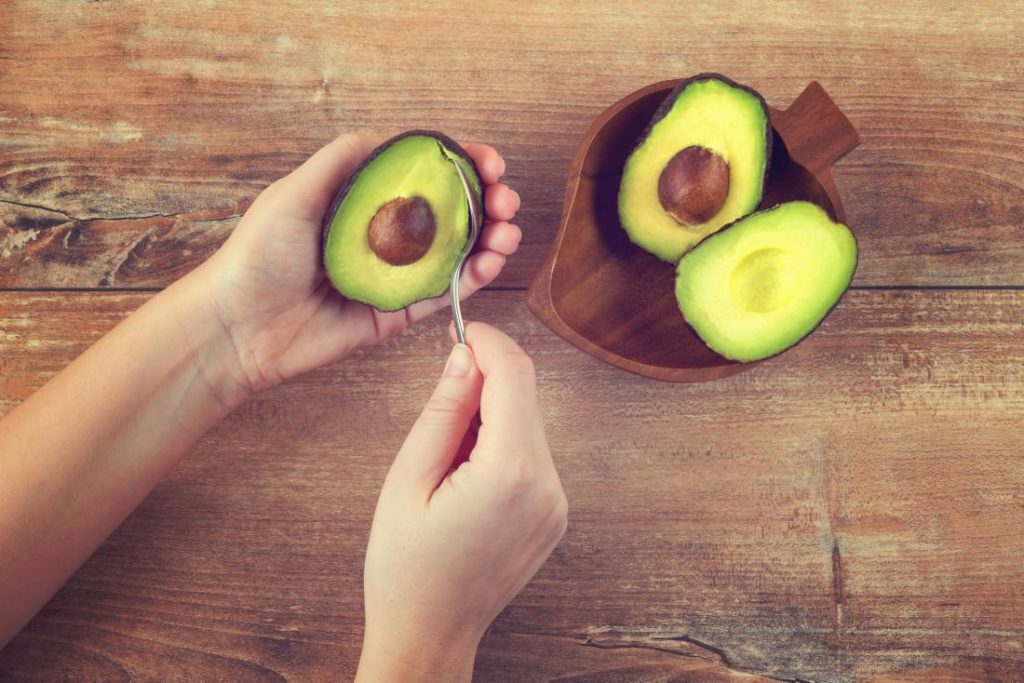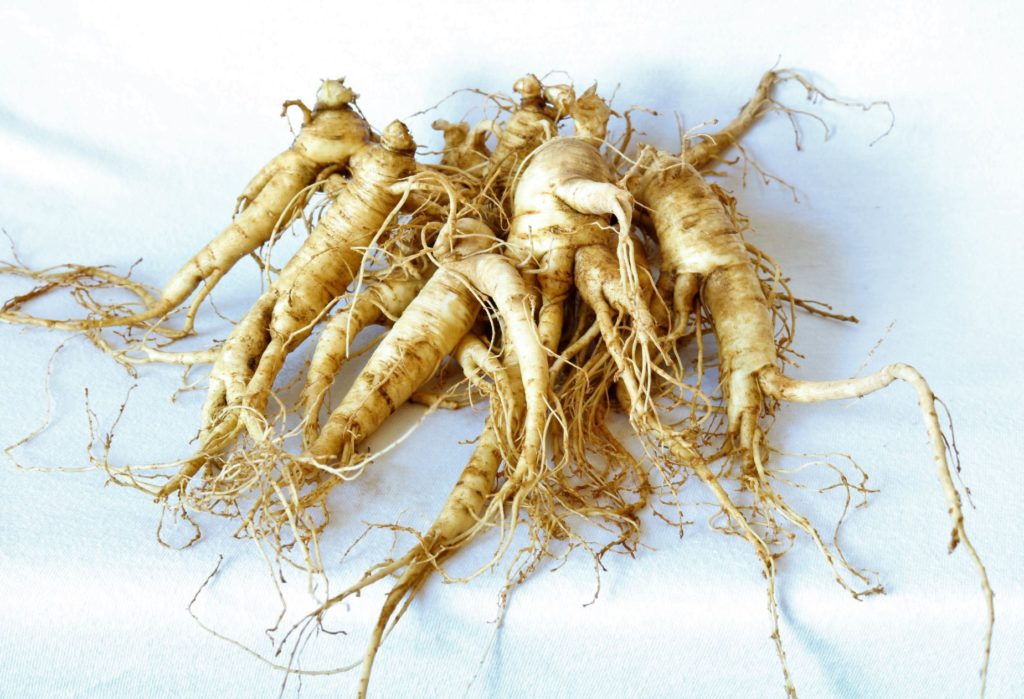Blood sugar also referred to as blood glucose is the concentration of sugar present in the blood of all human beings and animals. The body acquires the sugar through the foods you eat and converts it into glucose.
The pancreatic hormone, Insulin, helps the sugar to enter all the cells for use as energy. When there is a lack of insulin or the insulin produced is not used properly, it results in stagnant sugar levels in the blood. Over time, uncontrolled sugar levels in blood results in a condition called Diabetes.
Diabetes is chronic and can contribute to other complications such as kidney disease, eye disease, diabetic neuropathy, heart problems, stroke, and even some types of cancer.
Diabetes is manageable by lowering and maintaining blood sugar levels. Even if you don’t have diabetes but are prone to it due to lifestyle or hereditary reasons, controlling your sugar intake might leave you less susceptible to diabetes and its complications.
Managing blood sugar can be a nightmare for many people. Embracing healthy changes in your diet and lifestyle is the best way to go about it.
Listed are some of the best ways for lowering and managing blood sugar levels backed with scientific evidence.
1. Regular Exercise May Help Lower Blood Sugar

Engaging in regular exercise provides major benefits to the human body especially for people with Type II Diabetes. Exercise induces weight loss and increases insulin sensitivity (1).
When the body does not respond to the insulin produced in your body, it is called insulin resistance. Insulin sensitivity refers to how well your cells respond to insulin. Increased insulin sensitivity means lower insulin resistance and lowered blood sugar levels.
Exercise stimulates the muscle cells to utilize more blood sugar as fuel for energy, power and muscle contractions (2).
Studies show that both aerobic and resistance-training exercises apart from regulating blood sugar levels, help in maintaining healthier skeletal muscle, adipose tissue, liver, and pancreatic functions (3).
Simple daily activities such as brisk walking have shown to reduce the incidence of diabetes and to improve glycemic control and help prevent obesity in Type 2 Diabetes (4).
Research has shown that indulging in yoga exercises can lower overall stress and blood sugar levels in certain groups of people (5).
Another study showed that dancing was proven to lower blood sugar levels better than walking or machine-based exercises (6).
Summary: Exercise lowers insulin resistance and promotes better insulin sensitivity. Aerobic, resistance-training exercises, walking and even yoga can help in lowering and maintaining blood glucose levels to reduce the incidence or in treatment of Type II Diabetes.
2. Reducing Carb Intake May Lower Blood Sugar

The carbohydrates you consume are broken down into sugars and then moved into cells for use by the hormone, Insulin. Though some carbs are necessary for energy production by the body, too many carbs can cause high spikes, especially in diabetic people.
Studies show that lowering the carbs and eating a high-protein diet may bring significant changes in blood sugar levels in untreated type II diabetes (7).
Carbohydrate needs for individuals might vary. Hence, the American Diabetes Association (ADA) recommends counting the carbs one consumes to control the intake of carbs (8).
Scientific studies show that emphasis on portion control and carbohydrate counting to plan meals provided a variety of food choices that have the potential to improve glycemic control. (9)
One specific study showed that obese type II diabetes patients on a high-carb diet for 6 months who switched to a low-carb diet and followed up after 44 months were found to have better glycemic control and weight management (10).
Summary: High-carb diets affect glucose levels, more so in diabetics. Adopting a low-carb diet, counting carbs, adding more proteins, and exercising portion control can help improve glycemic levels and positively impact weight management.
3. High-Fiber Diets Can Help Lower Blood Sugar Levels
Dietary fiber also called roughage or bulk is a type of plant-based carbohydrate that the body cannot digest. Most carbohydrates a person consumes are broken down into sugars for use by the body. Fiber-rich foods inhibit the faster breakdown of carbs and help balance glucose absorption.
Studies have shown that long-term high-fiber diets can provide better glycemic control and lower incidence of hypoglycemic events in patients with type I diabetes (11).
Another study showed that a low-fat diet combined with a high fiber intake of 30g/d could be an effective approach to prevent type II diabetes (12).
Fibers are classified into soluble and insoluble fibers. Though both are necessary, soluble fibers have been found to reduce blood glucose levels effectively. Examples of soluble fiber include whole grains, legumes, fruits, and vegetables.
Researches show that consumption of whole grains, cereal, and their fibers has shown to reduce the risk of diabetes (13).
One study showed that rice bran water solubles could help control blood sugar levels and rice bran concentrates helped control serum lipid levels in both, type I and II diabetes (14).
A meta-analysis of various studies indicated that high consumption of fiber-rich fruits especially berries and vegetables such as green leafy vegetables, yellow vegetables, and cruciferous vegetables can potentially lower the risk of type II diabetes (15).
Summary: Fiber inclusion in one’s diet may reduce the incidence of type II diabetes and enhance better glycemic control in diabetics. Soluble fibers have exhibited the potential to lower the risk of diabetes and improve sugar and lipid levels in patients with type II diabetes.
4. Increasing Hydration Helps Lower Blood Sugar
The human body is made up of water. It constitutes about 60% of body weight in healthy adults and even a 3% depletion in water can lead to dehydration (16).
Studies show that regular and good water intake can reduce the incidence of developing hyperglycemia or high blood sugar (17).
The kidneys flush out excess sugar and toxins through urine and this process requires fluid replacement. Fluid replacement means drinking enough water to support bodily functions.
Water cannot be replaced by other sugar-sweetened beverages or fruit juices that may inversely cause a rise in blood sugar levels (18).
Proper hydration is crucial for lowering blood sugar levels. Researchers recommend a daily water intake of 3,000 ml for men and 2,200 ml for women to suffice as adequate hydration (19).
Summary: Drinking adequate water and staying hydrated is essential to lower onset or prevent high blood sugar levels in the body. Drinking artificial or sugar-sweetened juices or beverages may cause more harm and cannot replace water.
5. Eating Smaller Portions May Lower Blood Sugar
Eating smaller servings spaced through the day may help to prevent rises in glucose levels post-meals (20).
Studies have shown that larger meals mean more calories and energy intake which causes faster rises in blood sugar levels. Smaller portions reduce energy intake significantly which may help lower the risk of obesity too (21).
Research has indicated that people who are in the prediabetes or early type II diabetes stages may greatly benefit from 6 vs 3 meals a day as it improves postprandial glucose and provides better glycemic control (22).
Patients with type II diabetes may benefit from weight loss as it enhances glycemic control. One study of 130 obese patients with type II diabetes showed that portion sizing was an effective tool to promote weight reduction (23).
Summary: Controlling portion sizes may help in exerting better glycemic control and aid in weight loss. Smaller portions spread throughout the day reduce energy intake and prevent sudden spikes in glucose levels post-meals.
6. Consuming Low Glycemic Index Foods May Lower Blood Sugar

The Glycemic Index (GI) ranks carbohydrates in food based on the way they impact the blood sugar in the human body (24).
The American Diabetes Association (ADA) opines that the quantity, as well as the type of carbohydrate found in foods, affect postprandial glucose levels (25).
A meta-analysis of studies has shown that the intake of low GI diets can have a positive influence on glycated hemoglobin and fasting glucose levels with a significant reduction in body weight (26).
Foods that fall into low glycemic foods have a score of 55 or less on the glycemic index. Examples of such foods are stone-ground whole wheat, oatmeal, pasta, barley, sweet potato, legumes, fruits, etc. The ADA says that combining carbohydrate counting and GI can help in achieving better blood glucose levels in individuals (27).
Summary: Choosing foods with a low glycemic index may enhance better glycemic control in diabetics. Individuals can benefit more by counting carbohydrates and taking GI into account for maintaining blood glucose levels.
7. Check Your Sugars Regularly to Maintain Blood Sugar Levels
A good way to exert control and keep blood sugar in check is to keep monitoring them. The American Diabetes Association (ADA) concerning nutrition interventions, recommends plasma glucose monitoring to decide on dietary adjustments and the inclusion of medicines to treat type II diabetes (28).
Research shows that Continuous Glucose Monitoring (CGM) can help assess the glycemic effect of food, medication, etc. This helps patients to make necessary changes in food and practitioners to add/ adjust medications accordingly (29).
A detailed analysis of data from healthcare claims and lab tests in the US indicated that CGM was useful in improving levels of Hemoglobin A1 C (HbA1c) and was also cost-effective when used to change diabetes therapy (30).
Summary: One of the best ways to maintain good blood sugar levels is to keep monitoring them regularly. With advanced technological changes, CGM has proven to be effective both in terms of clinical outcomes and cost-effectiveness in diabetic people.
8. Reduce Stress to Lower Blood Sugar Levels
Stress can be classified as the body’s reaction to any situation that calls for change or adjustment. Stress is normal and good to the extent it keeps the mind and body alert and enables quick responses when the mind perceives danger.
Stress becomes harmful when the body is unable to cope with certain situations or if it is consistent.
Too much stress can also affect blood sugar significantly. Research suggests that owing to a lack of or use of insulin, stress-induced glucose may not be metabolized properly and can result in hyperglycemia (31).
One study suggested that stress hormones can induce metabolic decompensation in people who are diabetics (32).
Studies have suggested regular exercise as the potential remedy to reduce sensitivity to stress and also to enhance metabolic functions especially insulin sensitivity (33).
Indulging in stress-relieving activities such as meditation or yoga has been found to lower blood sugar levels with improved insulin sensitivity (34).
Summary: Stress is capable of affecting blood sugar levels especially in diabetics. Regular exercise and yoga activities help control blood sugar levels and improve insulin sensitivity.
9. Adequate Sleep Helps to Maintain Blood Sugar Levels
Sleep, surprisingly, is an important factor to lower or maintain blood sugar levels. The American Academy of Sleep Medicine (AASM) and Sleep Research Society (SRS) recommends 7 hours of quality sleep for maintaining optimal health (35).
Research indicates that deprivation of sleep can harm metabolic and hormonal functions in the body (36).
Studies have shown that sleep with short durations decreases insulin sensitivity in normal people. Lack of sleep wreaks havoc on hormones, which causes less satiety and more appetite-stimulation that results in fluctuations in glucose levels which in turn can increase the risk or incidence of diabetes (37).
In particular, the disruption of Slow Wave Sleep (SWS), the most important restorative stage in the sleep cycle is found to be harmful, as it can cause an imbalance in glucose regulation and increase the risk of type II diabetes (38).
A specific study in 2015 on the association between sleep loss and diabetes proved that insufficient sleep led to high levels of fatty acids in the blood that remained elevated, preventing the ability of insulin to regulate blood sugars (39).
Summary: Quality sleep time is essential to lower blood sugar levels. Short and disrupted sleep cycles can affect hormones and reduce the efficiency of metabolic functions which can increase the incidence and complications of type II diabetes.
10. Weight Control is Essential to Lower Blood Sugar
Weight management is key to avoid many health complications including Diabetes.
Maintaining a healthy weight goes a long way in stabilizing blood sugar levels and lowering the incidence of diabetes.
A Lifestyle Intervention Program that was administered to 1,079 participants with two goals of 7% weight loss and 150 minutes of physical activity was highly successful as it showed results of a 58% reduction in the incidence of diabetes (40).
One study showed that dietary changes and exercise over 5 years helped achieve normal glucose tolerance in 50% of subjects that were correlated with weight reduction (41).
Researchers opine that Waist Circumference (WC) is a clearer predictor of diabetes than Body Mass Index (BMI) as the relationship between WC and clinical outcome is stronger (42).
Even a nominal weight loss of ≥10% in the early stages of diabetes was associated with a remission of diabetes at 5 years (43).
Summary: Controlling weight is an ideal way to lower or maintain blood sugar levels. Keeping waist circumference as a measure, even small percentages of weight loss can be beneficial to lower incidence or risk of diabetes.
11. Include Foods Containing Chromium and Magnesium
Vitamins and minerals referred to as micronutrients are an important part of a healthy diet and provide numerous benefits to the human body.
Studies suggest that many micronutrients help enhance insulin levels and prevent risks arising out of high blood sugar levels (45).
Out of these micronutrients, chromium and magnesium play a vital role in the regulation of blood sugars.
Studies show that chromium is required for maintaining normal glucose metabolism and increases insulin sensitivity (46).
The addition of chromium-rich foods such as broccoli, green beans, apples, whole-grain products, nuts, beef, poultry, and dairy products may provide the necessary chromium from your daily diet.
Magnesium is another important mineral required for insulin metabolism and deficiency can result in insulin resistance (47).
Research says that increasing magnesium intake is vital for improving insulin sensitivity and reducing the risk of diabetes (48).
Food sources of magnesium include spinach, kale, bananas, raspberries, legumes, nuts, and seafood.
Summary: Micronutrients such as chromium and magnesium play an essential role in glucose and insulin metabolism. Adding foods rich in these nutrients will benefit the body with increased insulin sensitivity and lower risk of diabetes.
12. Add Cinnamon for Flavor and Health

Cinnamon, a spice with a rich flavor and aroma has been used in traditional Chinese and Indian medicine for centuries. One of its various health benefits is its ability to lower blood sugar levels.
Studies have shown that cinnamon can have beneficial effects on insulin sensitivity, insulin, glucose levels and improve all metabolic functions effectively (49).
Cinnamon contains certain compounds and polyphenols which studies suggest can improve glucose, insulin and HbA1c levels in patients with type II diabetes (50).
Research says that cinnamon bark is capable of controlling postprandial sugar levels in diabetic patients by inhibiting the intestinal enzymes alpha-glucosidase and pancreatic alpha-amylase (51).
Summary: Intake of cinnamon can be beneficial in aiding metabolic function and enhance glycemic control in diabetic patients.
13. Incorporate Apple Cider Vinegar in Salads and Dressings

Apple cider vinegar (ACV), made from fermented apple juice, can add a healthy and delicious twist to your salads and dressings. It has also been studied for its claims of providing various health benefits including lowering blood sugars in the body.
Studies suggest that apple cider vinegar with its content of sodium acetate and acetic acid can have a positive effect on glycemic response when consumed in small quantities as part of salad dressings (52).
Another study on non-diabetic and diabetic subjects with no medication intake showed that consumption of vinegar (ACV) with water before a high-carb meal can significantly improve postprandial insulin sensitivity in insulin-resistant subjects (53).
Summary: Apple cider vinegar can bring on a positive impact on the glycemic response when consumed in small quantities. ACV before a high-carb meal can also enhance insulin sensitivity in postprandial sugar.
14. Add Fenugreek to Your Daily Diet
Fenugreek is a herb native to the Mediterranean. The leaves and seeds are used in cooking and to make medicines. Fenugreek is rich in soluble fiber which works well for diabetes.
Studies show that the ingestion of fenugreek every day may lower the incidence rate of diabetes without any side effects (54).
Another study showed that ingestion of fenugreek extract for two months improved glycemic control and decreased insulin resistance in patients with type II diabetes (55).
Fenugreek powder, when incorporated into baked foods is undetectable and can be easily consumed keeping its sugar-lowering properties intact (56).
Summary: Fenugreek added to the everyday diet can lower the incidence or risk of diabetes. Fenugreek extracts or powder can help improve glycemic control and enhance insulin sensitivity in diabetic people.
15. Enjoy More Avocados for Increased Satiety

Avocado, commonly referred to as butter fruit, is a berry with a big seed. This fruit has a high nutritional value and contains carbohydrates, dietary fiber, protein along with excellent concentrations of potassium, folate, vitamins K, B6, C, E, and other minerals. Avocado fruit is known for its exclusive high concentrations of monounsaturated fatty acids (MUFAs).
Avocado consumption may help increase insulin sensitivity and lower blood sugar spikes. Studies show that avocados may increase the feeling of satiety and control the desire to eat (57).
The MUFA content in avocado compared to carbohydrates is considered beneficial to reduce plasma glucose as well as lipid concentration in patients with type II diabetes and reduce the risk of long-term complications (58).
Replacing some carbohydrates with avocados showed that it could improve the flow-mediated vasodilation (FMD) responses and improve glycemic and lipoprotein profiles in overweight adults (59).
Summary: Avocados have high MUFA content that may reduce plasma glucose levels to regulate glycemic levels. Replacing some carbs with avocado may increase longer feelings of satiety that may reduce cravings and fluctuations in blood sugar.
16. Consume More Green Tea to Balance Glucose Levels

With origins in China, green tea has been researched intensively for its many health benefits. Green tea has a rich content of polyphenols especially catechins which have many protective, health-benefiting qualities.
Research shows that increased intake of green tea may reduce the risk of diabetes. A study showed that Japanese people who consumed 6 or more cups of green tea daily were less susceptible to the risk of type II diabetes (60).
A meta-analysis of various studies on green tea showed favorable results with decreased fasting glucose and HbA1c concentrations that indicate that green tea can effectively improve insulin sensitivity and help in controlling glucose levels in the body. (61)
Summary: Green tea polyphenols have anti glycemic properties that can help regulate blood sugar. Increased intake of green tea may lower the incidence of type II diabetes.
17. Include American Ginseng for More Insulin

Native to eastern North America and part of the Ivy family, this traditional herb’s roots are what is used in the treatment of infections, cancer, and diabetes.
Though it’s not clear how ginseng works on reducing insulin resistance, research indicates that ginseng has exhibited anti-hyperglycemic properties that lowers insulin resistance and enhances insulin production to help regulate blood sugars. (62)
Ginseng may be useful in reducing the incidence of diabetes or prediabetes in non-diabetic people. Studies have shown that ginseng supplementation in non-diabetics taken at 40, 80, or 120 mins before a glucose challenge improved glucose tolerance (63).
Clinical trials have shown that ginseng can positively improve HbA1c levels and fasting glucose levels along with improvement in cholesterol levels that may lower cardiovascular risks in patients with type II diabetes (64).
Summary: American ginseng has proven to be effective in increasing glucose tolerance in non-diabetics. Ginseng exhibits properties that lower insulin resistance and improve fasting glucose and HbA1c levels.
18. Take Aloe Vera to Control Sugar Spikes
Aloe vera is a succulent plant with a gel-like substance that is used for various health issues. It is found helpful to keep blood sugars in check.
A meta-analysis of various studies revealed that aloe vera may lower levels of fasting glucose, HbA1c, triglycerides, total cholesterol, and LDL-C while increasing levels of HDL-C (good cholesterol) in prediabetes and early diabetes patients. (65)
A study on the metabolic effects of aloe vera gel indicated that it induced a reduction in body weight, body fat mass, fasting blood sugar, and insulin resistance (66).
One study showed that supplementation with 100 mg and 200 mg aloe vera gel powder in non-insulin dependent diabetics, could effectively bring down both fasting and postprandial blood glucose levels as well as considerable improvement in all cholesterol markers (67).
Summary: Aloe vera has shown the potential to lower fasting, postprandial, and HbA1c levels while improving cholesterol levels as well. Using aloe vera gel powder can enhance metabolic functions by lowering insulin resistance.
19. Add Berberine to Enhance Glucose Regulation
Berberine is a compound present in several plants and was used in traditional Chinese medicine to treat gastrointestinal problems, infections, and diabetes.
Research also shows that it can help improve blood sugar levels. Studies have shown that berberine possesses an anti glycemic effect and could lower fasting, postprandial, and HbA1c levels effectively. (68)
Studies indicate that berberine has shown the potential to inhibit alpha-glucosidase and decrease glucose transport through the intestinal epithelium which may be responsible for its anti glycemic properties (69).
Insulin resistance is one of the primary reasons for uncontrolled rises in blood sugar levels. Researchers opine that berberine may lower and regulate blood sugar levels in patients with type II diabetes by effectively lowering insulin resistance (70).
Summary: Berberine has exhibited anti-glycemic activity that inhibits glucose absorption. By reducing insulin resistance, berberine lowers fasting, postprandial, and HbA1c levels effectively.
20. Use Gymnema to Reduce Cravings
Gymnema Sylvestre known as Gurmar is an Indian herb that literally means ‘sugar destroyer’ It is widely used as an appetite suppressant and to treat diabetes for ages.
Scientific studies indicate that extracts of Gymnema have the potential to reduce insulin need and lower levels of fasting blood glucose, HbA1c, and plasma protein levels in insulin-dependent diabetes mellitus. (71)
Gymnema is a bitter-tasting plant compound and this seems to positively affect glycemic levels. Studies show that intake of Gymnema can affect the oral sweet-taste sensation (OSTS) which has a profound effect on postprandial intestinal activities that in turn have a positive impact on glycemic levels (72).
Another study showed that hydroxycitric acid (HCA) in combination with niacin-bound chromium and Gymnema extract resulted in weight loss which may help regulate lipid and glucose levels (73).
Summary: Gymnema Sylvestre has appetite and sweet-taste suppressing properties that regulate postprandial glycemic levels. It lowers the need for insulin and controls fasting blood sugar and HbA1c levels.
The Final Note
Uncontrolled blood sugar can lead to diabetes and other health complications. But it is certainly manageable with the right lifestyle changes and effective monitoring.
Watching what and how you eat, sleep, exercise, weight management and reducing stress all go a long way in helping to exert control over your glucose levels. Whether one has diabetes or not, getting your sugar levels checked regularly is essential to understand where you stand and whether you require medical intervention or not.
Healthy changes in diet are more crucial if you are a diabetic, as most of the foods and ways mentioned help regulate blood sugar levels. But too many additions can result in lower glucose levels or hypoglycemia, so do check with your doctor if you have doubts.
Medical interventions through medications or insulin help stabilize your blood sugar levels and lower the risk of long-term complications or even mortality.
Natural dietary changes always help but consult a doctor regarding changes in diet or if you want to consider herbal supplements. Stay hydrated and remember to engage yourself in stress-relieving activities such as yoga.